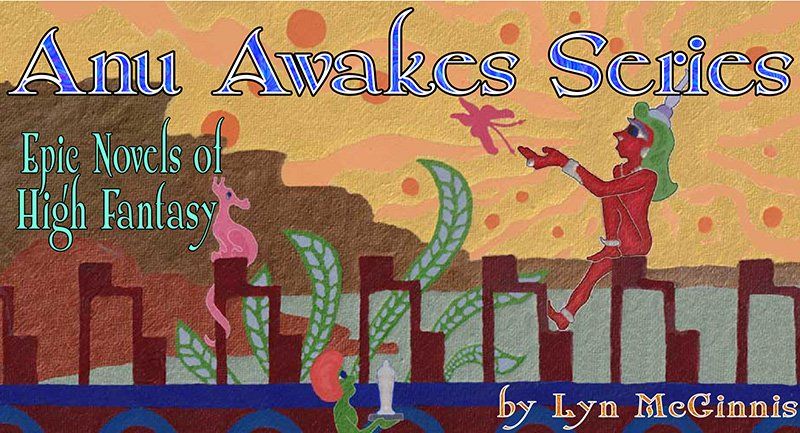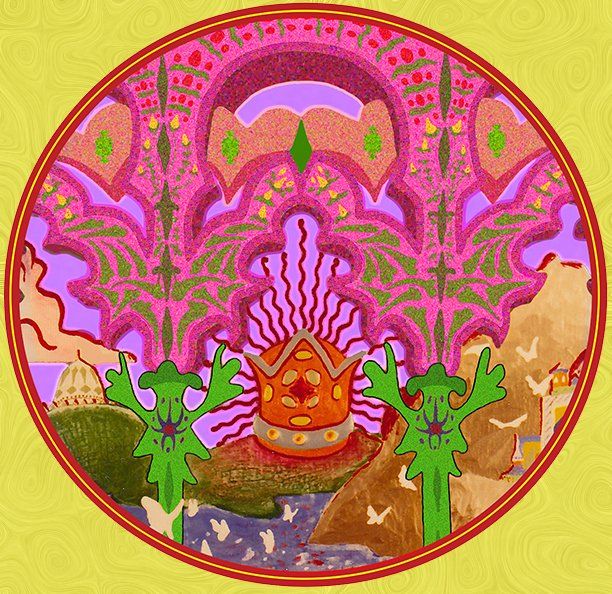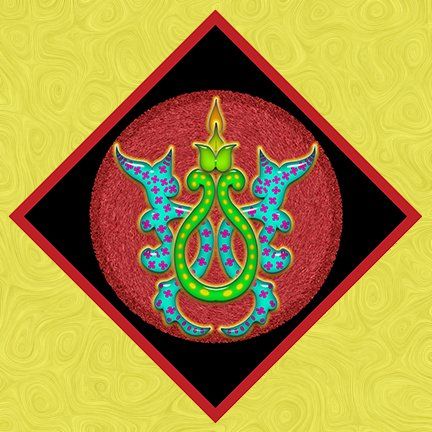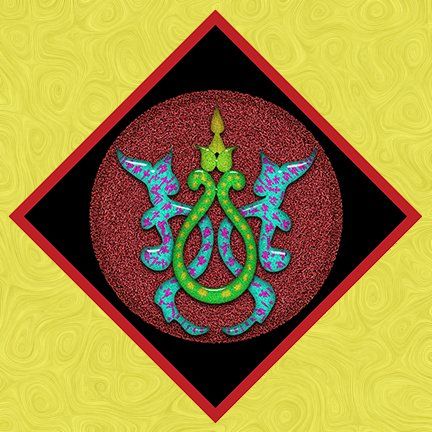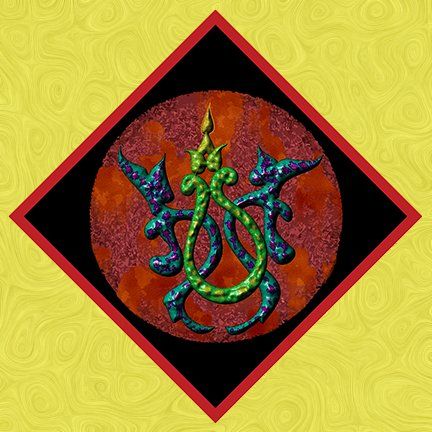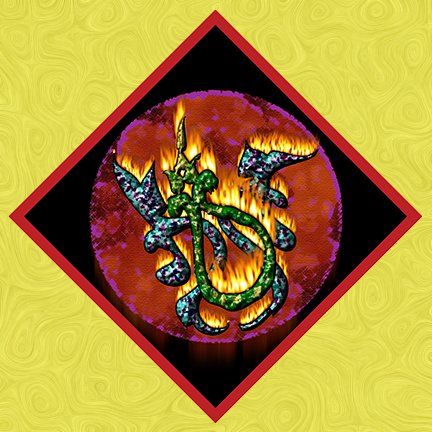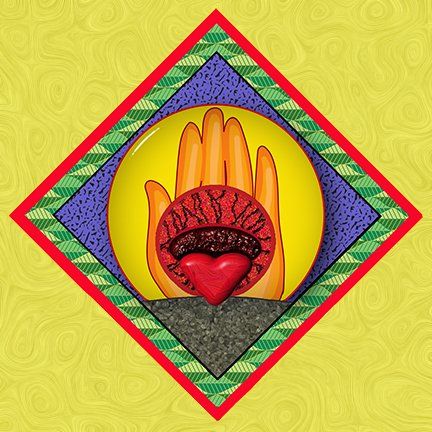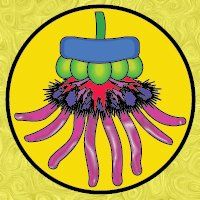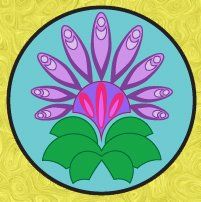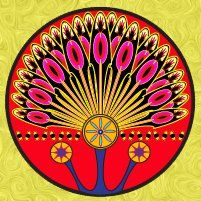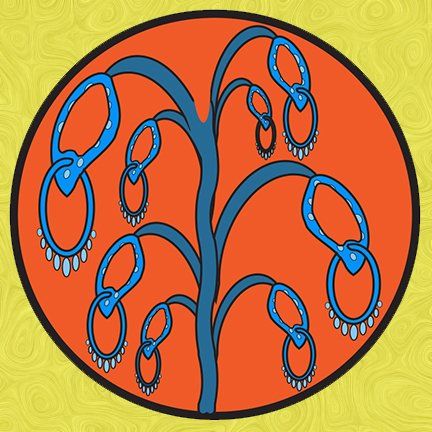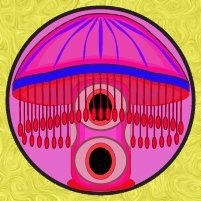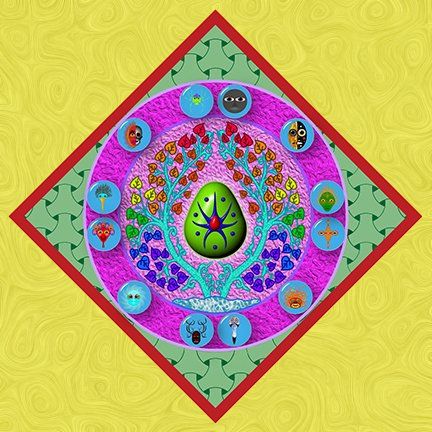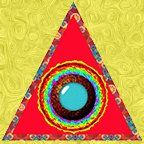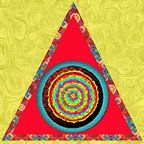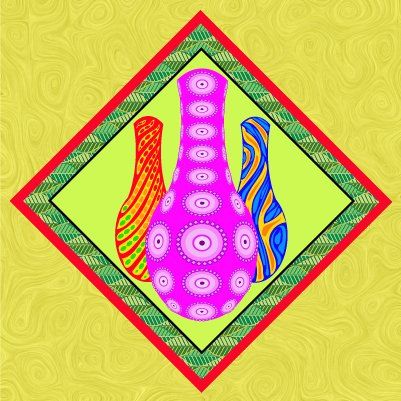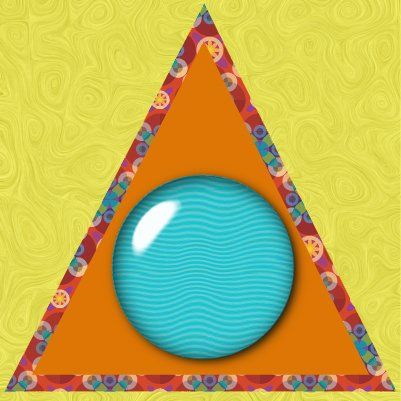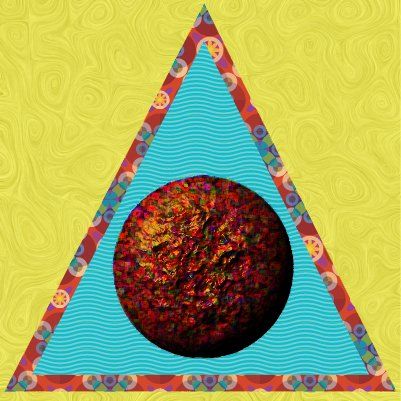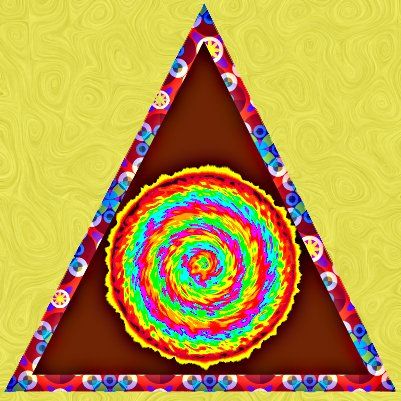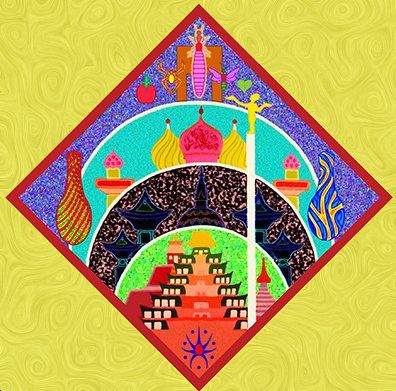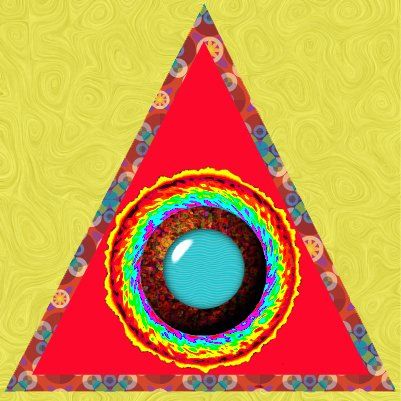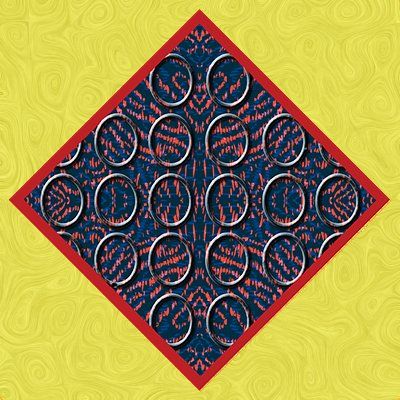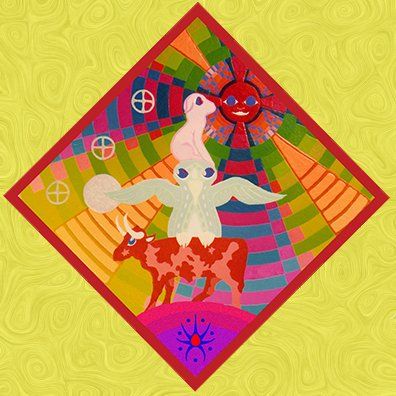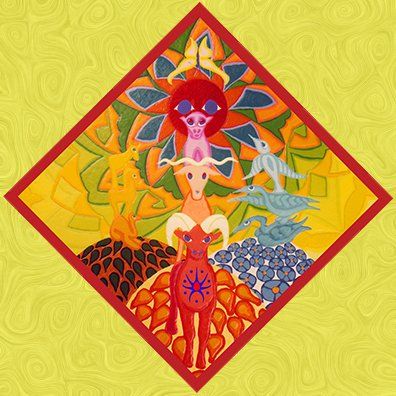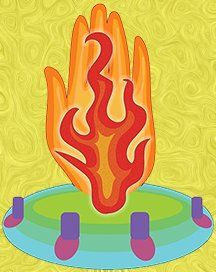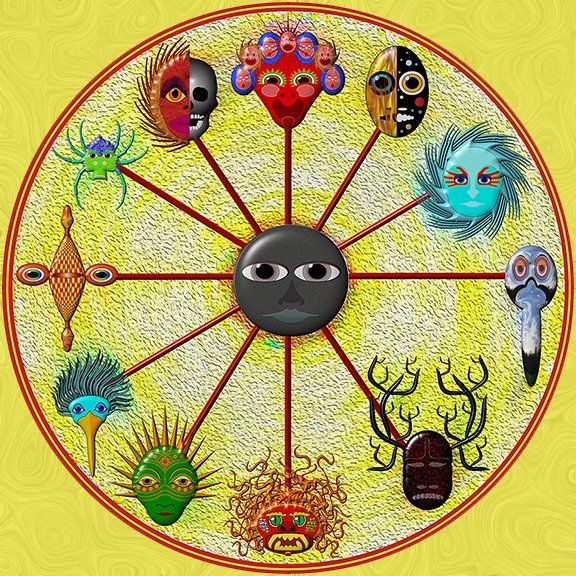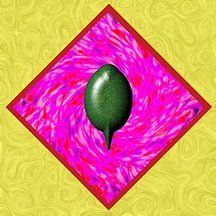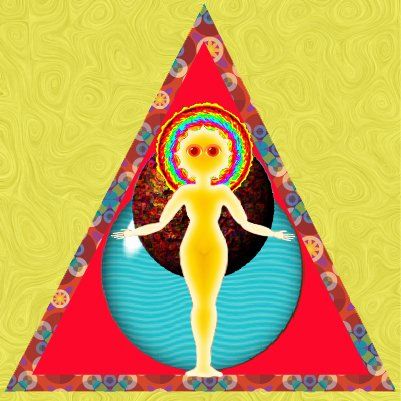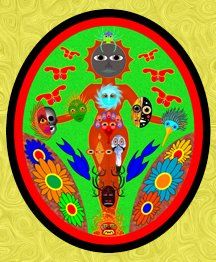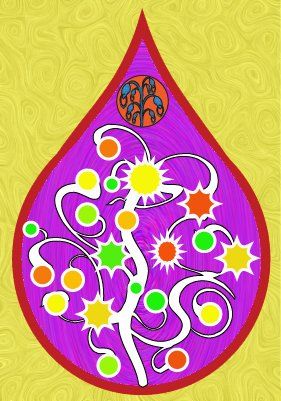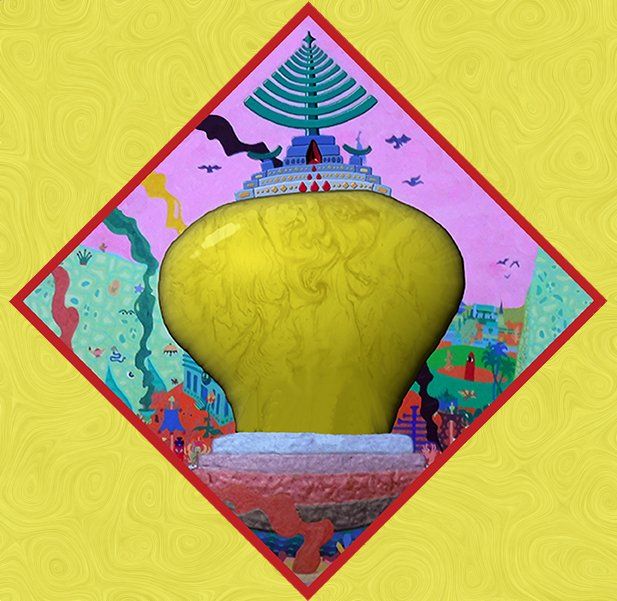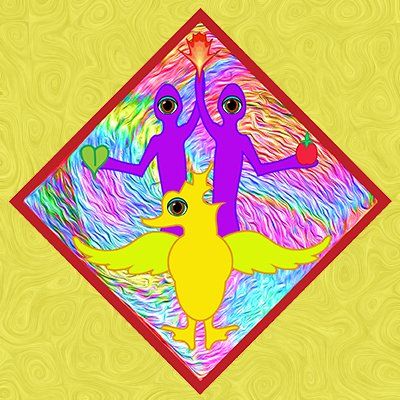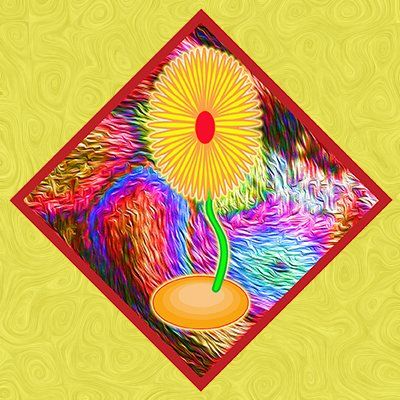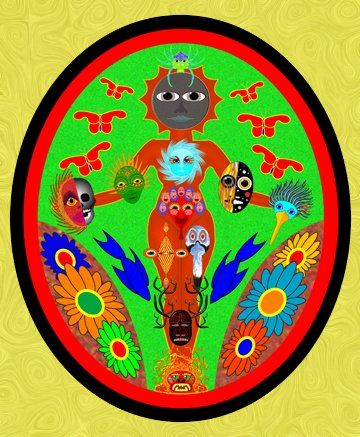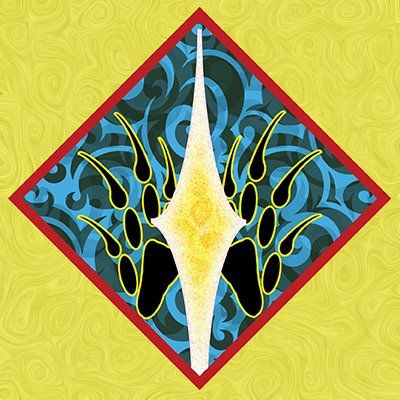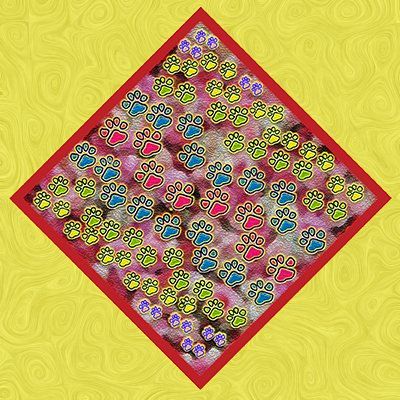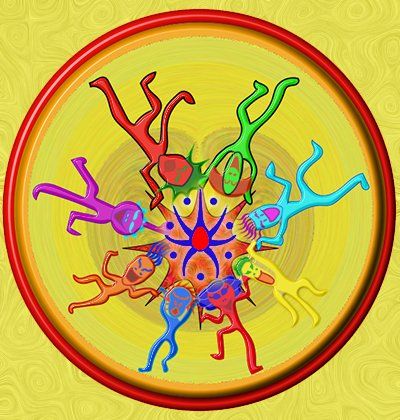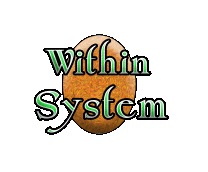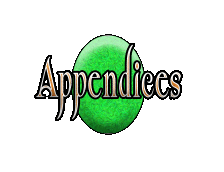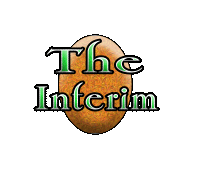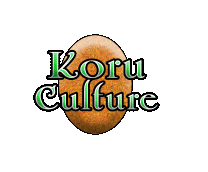
Tatchlan is a highly refined living culture that overlays ‘The Skin of Anu,' meaning all life. This is a deliberate construction meant to domesticate raw life and liberate the Tolku from what they determined to be the primary cause of all misery and failure - Self-Absorption. The Tatchlan name has most-ancient origins and translates as ‘Life Face’ and ‘The Face of Life.’ It is also associated with such terms as ‘open eyes’ and ‘wakefulness.’ Composed of innumerable compound elements, this vast interwoven elegance is not visible to the unaided eye. Visiting this unified organism combines dreams, training, Vision Windows, specific rituals, and intense bonding with creatures known as Living Instruments. Aspects of this inner world may be altered, adjusted and amended, usually in increments, over generations.
Self-Absorption’s Four Generations
While based on raw life, diverse disciplines have worked out a more significant pattern regarding how this manifestation of survival maintains itself. Most now agree that Self-Absorption is not as blind as was initially supposed. With the benefit of time and insights gained within Tatchlan, where The Common Desire is made manifest, a repetitive pattern has emerged regarding how it maintains itself. Full Self-Absorption was only possible for one or two generations before it self-extinguished. The outline of these ‘Four Generations,' illustrating one completed cycle of its reign, is presented below. It must be noted these generations are entirely subject to random factors, and their duration and even order may be disrupted. As such, the below description is quite general. Those who study the large and small births and deaths of nations founded before and during the Lesser Era of the Primary Epoch find this tool of considerable use in categorizing various stages of their brief existence.
First Generation: Slumber
This is a time after a climactic conclusion of the previous series when all fires burn out, and Anu lies near death with excess (see Fourth Generation: Murder below). The following generation grows up condemning their predecessors and attempting to construct a new order as they attain adulthood. This is based on the rule of law and establishing centralized overseeing institutions. Along with legal and governance conventions, this usually involved the reinstitution of what was known as the ‘Honours and Duties,’ a set of conventions between the state and its subjects. The perception of all having a role in forming the greater good predominates. While this generation is initially consumed with rebuilding, they assume all authority by the time they are elders. Intense and inspiring leaders of a variety of types characterize the resulting culture.
Notwithstanding the diversity of their aims and message, they serve as focal points for the new order. This is also when new dynasties, disciplines, and schools of thought are founded. Whatever the vision, it leads to a strong sense of common direction and purpose as previously bitter rivals find unified aims and shared goals. It is of interest to note that Sensitives were often prized and celebrated during this period.
As the majority endorses such a community-based order, a marginalized minority fights against it. These initial clashes have been characterized as Self-Absorption ‘itching’ during its Slumber. The duration of this First Generation may vary widely. There are historical instances of Self-Absorption, remaining in Slumber for a mere twenty years to staying quiet for over four hundred years.
Second Generation: Hunger
Self-Absorption rouses and immediately chafes against the discipline, unity and conformity of the previous Slumber Generation. This disruption usually manifests in the youth and young adults of this period.
The unifying vision gradually begins to be critiqued and disparaged, and the resulting order becomes increasingly maligned and lampooned. Simultaneously, cultures of greed and ambition appear, beginning to accumulate and flourish among the elders. This leads to the gradual poisoning of the state administration and other guiding organizations.
These shameful tendencies further tarnish the considerable repute and influence various unifying institutions once held. While a growing intellectual opposition mounts its attack, a portion of the general public looks around at their nurturing society and hunger for chaos. Some wiser cultures foresaw this danger and either instituted or immediately initiated various outlets. These often took the form of specific festivals or cults to allow these base urges to be expressed before ensuring the previous community vision was reaffirmed. These mitigating rituals proved insufficient or grew beyond their creator’s control as time passed.
Third Generation: Theft
Self-Absorption fully wakens and launches an assault on the First Generation’s laws and establishments. This manifests in the general culture, which moves away from a shared vision and settles for facile individual aspirations.
Popular culture becomes shallow in its focus. The transient current generation sees their lifespan as paramount and the cumulative experience of previous generations without account. Thus, they cultivate an ignorance of why the crumbling edifices around them were built.
They also do not consider the next generation when setting their conflicting goals, serving only their immediate needs. In time, these forces came into real power, strengthening the culture of private political corruption while publicly devaluing and debasing the First Generation’s collective works. By various means, they achieve their aims by undermining all confraternities in favour of individual fulfillment and gain. The rot of corruption flowers in this environment further undermines all institutions' functioning. For a variety of reasons, this may also be a time of oppression or persecution of Sensitives, along with increasingly superficial attitudes towards other life on Anu, in particular their steadfast Cousins. Many theories have been proposed for why the Third Generation of Self-Absorption often turns on these previously beloved figures.
Fourth Generation: Murder
These vile tendencies inevitably lead to conflict, particularly civil disruption within large, complex societies. This may either be a miserable incremental process or a savage overthrow of entire nation-states. This chaos is youth-led, and they are the primary casualties of the fires they engender. Amid the resulting ashes, the survivors begin to come together. Soon after the catastrophe, critiques begin to appear against the Second and Third Generation revilers, and the previous First Generation is looked back on with longing. A notable feature of this post-calamity period is its brutal creativity, where specific iconoclastic arts flourish.
It is not uncommon for the remaining Second and Third Generation public monuments to be torn down, and their ruin used to rebuild First Generation structures. This is also when new philosophies and old mysticisms return to popular culture. It is known in prehistory that Water Viewers arose immediately after one such Fourth Generation catastrophe. It is out of a tradition maintained through several of these Fourth Generation crises that the first Master societies were instituted.
Children and youth growing up within this horror lament the past. They embrace discipline and live more measured lives, with their primary consideration being the welfare of each other and the necessity of rebuilding the community. Self-Absorption recedes from exhaustion at its excesses, and a new majority turns their backs on its urges.
Of all these phases, this tends to be the shortest and most likely to occupy a single living and dying generation. Traditionally, Honoured Historians have devoted more attention to the long aftermath, including the subsequent survivors in this period. They have been named the ‘Late Fourth’ and ‘Early First’ periods.
Overcoming the survival response
Prehistoric sages referred to the lot of all who breathe as dwelling within the ‘Kingdom of Pain.’ In this place, they witnessed the spectacle of ‘death chasing life chasing death’ ceaselessly. This was distinguished as the base level of existence - survival. This was discerned to be the response to the twin threats of indifferent non-life and predatory life. Unlike those following the myriad of early religions, these pre-Masters, or ‘Practicians,’ did not manufacture an escape through the fantasy of an immaterial extension to embodied existence with all its attendant absurdities. They aimed to provide the Tolku with the ability to perceive their situation, the tools to walk towards their difficulty, and the ability to free themselves from this blind wheel of ‘death chasing life chasing death’ survival.
Once the Tolku were loose from their prison, these Practicians longed to set their feet on a path to ‘tranquillity and happiness.’ The first true Masters were able, by various gentle and sophisticated disciplines, to consistently shift their awareness and see Raw Life and all its workings. They understood that fear was the foundation and the fuel of Raw Life. They came to name this feral and scourging realm Indatubangus. With the formation of Lustrum Mirrors, they unencumbered themselves from this raw legacy. They then determined their first step involved growing a new layer of calmness over the uproar. This layer provided ‘eyes’ to what had been a mindless existence and, in time, would be named The General Plain. This awareness provided a focus and impetus to move reality beyond wild and thrashing survival to a calm, conscious, goal-formulating life.
Common Desire and Happiness
As detailed elsewhere, what is known as The Common Desire flows as changeable rivers over the surface of the Living Orb. While its icon manifests its worst tendencies, it is the natural outcome of the cumulative actions of the Tolku and later Koru, Yakku and Yelda. Its ‘rivers,’ ‘pools,’ and ‘lakes’ are the manifestation of their collective propensities. The historical problem is these inclinations are blind to the broader surrounding landscape. Worse, they appear to possess little memory of past events. As such, their source is Indatubangus, or Raw Life, and may become a profound impediment to peace and happiness. This is why they are known by terms such as ‘Will’ and ‘Desire.' Both of these inclinations are subject to distraction, changeability and inconstancy. They have their source in the primitive yet powerful portions of the brain, remaining rooted in the blind realm of raw life. Despite general agreement that tranquillity and contentment are desirable, these fluctuating and erratic tempers may sabotage all good intentions and thus are closely monitored.
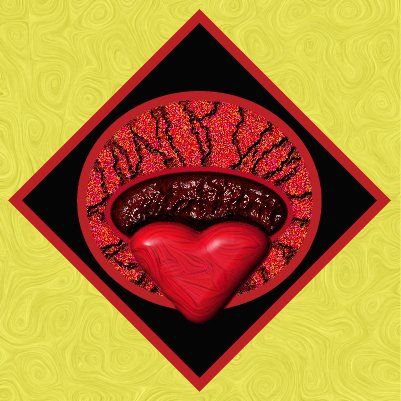
Anu Cluster Event
As the expansive Greater Era of the Primary Epoch of the Tolku progressed, a series of cumulative events led to extensive ceremonial observances of various milestones. What began as local, regional and provincial rites grew into synchronized continental practices. The growing scale of these events magnified and reflected the unity of the ever-increasing Cluster-of-Clusters Nation. With the remaining Raw Suvuka sequestering on the Eastern end of Thermistal and the domestication of their descendants, the Tolku were said to possess Anu. From the Vettencore Passage west, Thermistal was tamed and settled under the same Majastas Hand, cradling the sovereignty of Rho-Jashun and Statos-Vey.
The structure of the Anu Cluster Event was purposefully kept elemental. It was usually composed of simple stretches and meditative poses, paced by drums and accompanied by musical instruments and chants, all done in careful succession. It would begin on the easternmost island of the Taldonow chain off the southeastern coast of Statos-Vey and continue west. The momentum followed Nu’s course across the sky. In large open areas, a careful choreography ensured that those clusters in the east initiated the ritual, with each group further west following in close sequence. Calculation was done to time each gesture's initiation according to each cluster's longitude. From south to north, each cluster commenced at the same instant. Far beyond the view of participants in any area, the same ceremony was followed in what appeared to be a series of waves moving east to west. Each Anu Cluster Event was directed from the equator, following Nu from dawn to his Zenith Passage before proceeding to his setting.
The global midpoint of this event took place at Lake Kozen, close to the exact centre of all landmasses on Anu on the equator, north of the Angakut Channel. This is in southeastern Rho-Jashun in what is now Chelka Province. The event would end with Nu’s setting off the westernmost island of the Wazaratcha Archipelago in northern Rho-Jashun. Regardless of all other variations, Anu Cluster Events occurred once a year on one of two dates, Basket Elder Day (225) or Fish Elder Day (261), either side of Mid Year on Banner Elder Day (243). These comprehensive events took place due to various factors and often were separated by millennia. This monumental ceremony was captured at the midpoint of the Primary Epoch in a colossal construction within The Inner City of Upata-Shepsus known as the Anu Cluster Event Chamber.
Divisions between the Koru and Yakku prevented such an event from taking place for much of the Secondary Epoch. The Yakku rejected the Tatchlan legacy after the Killing Swath, turning inward to live a separate existence. It was not until after the completion of the Sixth Burning Blossom Series and the final unification of the Yakku and Yelda of Thermistal in a new Cluster-of-Clusters Nation in what would come to be known as the ‘Glorious Sunset of Secondary Epoch’ that Anu Cluster Events were renewed. This was due to a third Mantle, encompassing both the Yeldic and Yakku populations of Thermistal, coming into being. This is detailed in the final novel of this series. Over the subsequent Aeons of the Secondary Epoch, no less than sixty Anu Cluster Events took place, covering the entirety of the Skin of Anu . After this, the Secondary Epoch ended dramatically, and the final Tertiary Epoch commenced. Other dreams replaced those of Anu Cluster Events in the growing twilight.
Early in the Secondary Epoch, the Danam Yelda travelling from Dalinantu on their Ceremonial Walk to their patrimony of Statos-Vey would raise their Seventh Witness Mound on the shores of Lake Kozen, unaware of its pivotal role in Primary Epoch history (see the third novel of this series, ‘Dalinantu Emergence’).
The General Plain
The first iteration of the Resplendent Work was named ‘ The General Plain.’ Patiently woven by generations of Practicians, it superficially appeared as a gently rolling landscape with smooth-rimmed folds plunging into Raw Life to great depths. These folds form thin, waving, artful patterns across the otherwise calm prospect (among other mysteries, within the depths of this intricate network of folds, it was later discovered that the Breathing Seals Conglomerations and other Majastas tools were planted). Within this apparent uniformity was a living mat of ‘Tentacles, Tendrils and Tails’ organized into what would be known as the ‘Increments of Eight Conventions.’ The early Practicians were inspired in their initial work by what was later named ‘The Nether Network.’ This is the vast series of interconnected nets of mycelia forming an unending carpet of living fungal mesh spreading beneath the Skin of Anu. By innumerable connections, a rudimentary intelligence was collectively achieved, leading to large swaths of surface flora being enriched by nutrients carried over distances and warned of approaching danger. Now, a new network, superior in its intelligent design and even more expansive and complex, brought growing peace and harmony to the tormented knot of Raw Life. Forming the ground out of which all subsequent innovations and refinements grew, this General Plain successfully encompassed these chaotic realms, building a new ‘skin’ on life to form the Living Orb. Most generations of Masters labouring throughout the Lesser Era of the Primary Epoch dedicated their lives to completing this General Plain. Given the vile nature of Raw Life, these most-ancient Masters adored this calm and orderly new dominion. This gentle landscape contained the seeds for all that was to come, and over time, they began to move and change the prospect into the vital and dynamic commonwealth it is today. The formation of the Tatchlan Cubes provided an overview of the entire Living System. This elaborate craft began when the subdued surface of this General Plain covered the whole surface.
While most of the Living Orb is filled with richness and variety in the Secondary Epoch, there remains at least one island of calmness, continuing to be called The General Plain. These serene expanses present universal and subtle indicators lost in the unsleeping activity of the rest of Tatchlan. The subtle delicacy and muted elegance of this domain are beyond the ability of most Invocates to traverse. The most powerful of Operants, often designated as the fifth rank of the Cluster-of-Cluster Nation’s Living Jewels as Superior Operants, attend the Majastas in reading its refined messages. One General Plain remains constant, and other smaller plains open for some time before closing and opening again in different locations. As with all else within Tatchlan, this reflects the current state of The Living System. Another reason for its calm demeanour is the lack of any trace of the roaring channels of The Common Desire. These rash and forgetful rivers traverse and bisect much of the remaining Living Orb. The tranquil and composed surface of The General Plain absorbs this riot into its peace. There have been many occasions when a Majastas has resolved an intractable issue within The Common Desire by leading it to flow out onto The General Plain, where it loses all memory of itself.
Indatubangas – the bitter middle layer of raw life Before anything else existed, this realm dwelt by itself within each manifestation of life on Anu. It grew in tiny increments through the eons and stood in defiance of non-life existing around it, gripping its watery core ofAmanavata.
Raw life compensated for the harshness of existence by exceeding all bounds in reproducing itself to ensure survival. To guarantee its abundance did not destroy itself, it also produced new life, culling the excess of other life.
The result is millions of mouths forever consuming each other, leading to an organic structure composed of blind parts, unaware of their role or the larger fabric they created. The result is known as the ‘Kingdom of Pain,’ usually ending in predation, disease or, most commonly, starvation.
The
Primary Masters fashioned
Tatchlan to waken life and give it a more significant awareness and purpose. Living Instruments gently introduced Invocates to the ‘outer' layer: Amanavata, the water sphere.
The inner orb, within Indatubangas, is the Living Orb of Tatchlan itself. Positioned between the other two, Indatubangas continues, but its excessive waste, blind crudity and wild vitality have a new role.
Another name for Indatubangas is the ‘oven' or ‘furnace.' This is due to its central task in generating life elements for the outer and inner orb and absorbing worn and damaged portions to be re-forged. Two things would strike Operants, Invocates and Majastas standing on the surface of the middle orb. One would be the constant rain of elements arriving from Amanavata and the bubbling out and swimming away of fresh life portions from the surface. The other aspect would be the wild chaos of the skin, which moves as a volatile soup.
The Inner Living Orb
This is the newest portion of this vast being of life. It has been fashioned by countless generations of Practicians and Tatchlan Masters throughout recorded history. While composed of elements from the other layers, it possesses collective wakefulness capable of directing the overall function of all else.
This ancient Koru icon, The Inner Living Orb, presents the picture of a sphere engulfed in a series of spirals. In truth, a visitor to the Living Orb may see many linked spirals and other dynamic formations moving across the surface in quick succession. This emblem also shows the surface wreathed in flame. Invocates arriving may feel waves of heat emanating from portions of the volatile surface at locations of intensive activity. The image is also said to evoke a sense of the powerful aromas and massive collective song from those who have the privilege of visiting this most refined aspect of the Resplendent System of Tatchlan.
It is to be noted that the backdrop for each image is meant to suggest it is nested inside the previous layer. This remains the experience of most Invocates as they travel within Tatchlan by their link to their Living Instruments. The rare minority of Operants perceive the actual structure, as outlined below.
Structure changes between Primary and Secondary Epochs
After the fall of the Primary Epoch by the Killing Swath, it is now understood that the Living Orb appeared to contract. At the same time, the outer two layers, receiving much of its expelled material, expanded. Early in the Secondary Epoch, the first Koru Invocates experienced great distances between each layer. This lead to the notion that the Living System was composed of ‘three orbs' resting inside each other. This was one of many sources of difficulty for the early Koru, as the surviving Tolku documentation suggested a very different structure than what they commonly experienced The earliest references, dating back to the dawn of the Primary Epoch, agreed with their experience.
Gradually succeeding generations came to realize what they now termed the ‘three orbs' was an intentional distortion of the original design by the most-ancient Primary Masters. As the first millennia of the Secondary Epoch progressed, Invocates observed the two outer layers gradually collapsing. The Living Orb appeared to reabsorb much of its substance back into itself. With the emergence of the Yelda, this process accelerated until early in the Danam Yelda's Nantu Age the original configuration known throughout most of the Primary Epoch of the Tolku was reattained.
Further scholarship has revealed that the Living System twice assumed this formation. Once was after the Killing Swath, and the second was far earlier. Just before its ‘Quickening' at the commencement of the Primary Epoch, before taking on its fully wakened layered form, huge gaps existed between the layers of Tatchlan. Because of these events and experiences, a well-established artistic tradition of depicting the Living System as composed of three successive orbs continues in various forms. A significant number of well-known theatrical works also frame it in this fashion according to the understanding of the time, ensuring the imagery continues.
Pictured here is a most-ancient symbolic representation of the three orbs. Among many elements, an Invocate is shown rising through the layers and exiting Tatchlan. There, they view images of life inspired or perfected by the Living System on the Skin of Anu. Two images of Living Instrument shells flank the formation, part inside and part outside the orbs.
Actual internal structure (inversion)
The symbolic representations and the depictions of actual Primary Faces are an illusion. As mentioned, the real makeup of Tatchlan is the waters known as Amanavata, forming the innermost channels. The vital and chaotic layer, Indatubangas, the eldest and containing many necessary arrangements, forms the body. What is commonly called the ‘Living Orb' is the outermost layer covering the entirety of the entity. All elements are connected by vast networks of individual and entwined tendrils (see below), which form the conduits for communication and co-ordinated response. This means Invocates enter the Resplendent System at its deepest point and proceed through the central realm before reaching the newest and most highly specialized layers at the surface of the collective being of life. This ‘inversion' perception is a function of how the Living Instruments filter the experience to the Invocate, due to how the Living Instruments themselves cushion the Invocate's journey.
The reason the Living Instruments are designed this way has to do with the Primary and Uluvatu Masters. These early Masters determined that the Living System's humbling depth and daunting complexity would limit the number of Invocates capable of working with it. This realization led to their long labours to fashion a living and dynamic set of iconic devices, including these three layers, to overlay the dense reality they represent. The Living Instruments were designed to interpret the raw experience of the Living System into these icons, which are suited to the mind and imagination of most accomplished Invocates. The Primary and Secondary Faces are the most dynamic and flexible of these symbols. Only a tiny portion of the Invocate population the rare Operants living during the Primary and Secondary Epoch have been aware of the true nature of Tatchlan. Those believing the symbolic representation is true can function at the deepest proficiency levels. Dream Guides were fashioned later in the Primary Epoch, and although their perspective is far more proscribed, they also conform to a limited degree to these same symbols. In so doing, they reinforce the external representations of Tatchlan, particularly the Primary and Secondary Faces seen in daily life.
Tentacles, Tendrils and Tails
This refers to the base infrastructure, particularly the encircling layer popularly known as the ‘Living Orb.' It comprises countless billions of dynamic, radiating and interconnecting units or ‘Seeds.' While there are many classes, all conform to the following general structure. From the Seed, there radiates a crown of what are named ‘tentacles' and ‘tendrils.' These reach out, interweaving with the surrounding network, forming, along with a host of supportive elements, the foundational net of all manifestations of the Living Orb. Essentially, this collective network of tendrils, composed of ‘eight within eight within eight’ according to the Uluvatu Master’s ‘Increments of Eight Conventions,’ is The Living Orb.
Light ‘spots’ and ‘circles’ appear inside and out of the Living System on new life created by Tatchlan. They represent specialized concentrations of these Seeds, so numerous as to be visible to the unaided eye. Most of these Seed's tentacles form a dense mat of interlacing tendrils forming the surrounding network. Others are connected to distant portions of the Living Orb via their ‘tails.' They are usually composed of a single tail with smaller radiating branches issuing from the base of each elemental Seed. These tails are the largest segment, possibly travelling vast distances to connect with the tentacles of a specific living Seed.
Most do not travel as far but form dense, linked, and interconnecting networks that span large portions of the Living Orb to accomplish the most complex functions. These tails form the vital link between contrasting and complementing elements, leading to the overall animation and vitality of the Living Orb.
However far they travel, when they arrive, they link with a specific tentacle at a particular juncture of their counterpart. These tentacles may have hundreds of branches along their length. Most are connected with local Seed tentacles, but some are grown specifically for the tails of others nearby or far distant.
Individual Seeds are too small for most Invocates to see. Perhaps one Operant in a generation possesses a particular ability to distinguish them. Even so, their linked structures are too meshed and delicate to touch. Instead, Majastas and Invocate circles throughout Tolku, Koru and Yeldic history manipulate the many archetypes, especially the Primary and Secondary Faces, that are associated with them.
The First Masters saw the necessity of this construction of living icons, to embody untold billions of Seeds, concerned with each minuscule aspect of its living organization. During the Primary Epoch, these linkages were sealed. The Primary and Secondary Faces are the definitive way of accessing any grouping of Seeds and all their extended networks, thus monitoring and affecting all aspects of life. Despite this level of proficiency, the Primary Epoch saw many dysfunctions within Tatchlan, which ultimately led to the Rectification, the Killing Swath, The Interim, and the eventual birth of the Secondary Epoch. This enormous and unimaginably complex formation began to grow under the care of the early Masters after the fall of the Funomanru Dynasty.
Much later, the Uluvatu Masters sufficiently completed this generational work to see it grow independently, becoming a ‘skin' overlaying all life. This coalesced, forming an awakened landscape known as The General Plain. It could unify most within it and administer, manage, direct and govern what had been formerly its disparate and blind constituent parts. At the same time, they fashioned the symbolic overlay, allowing most Invocates and Operants to navigate and function within this monumental and intricate environment successfully. This layer's formation and the integration of the symbolic manifestation of its activity allowed Tatchlan to be born. Many more generations lay ahead before the final ‘Quickening.' This was when all aspects of the Living System would wake together. An important link was then formed within the minds of those capable of entertaining it.
The story of this Quickening takes place in the first novel of this series, ‘Hesha Vira's Challenge.’
Artistic traditions
The Living System is represented in many ways. Seldom do these depictions match with what an Invocate now experiences. This is because most of the population, including creative ones, can access only limited views through Dream Guides. Often, what is seen is symbolic and iconic instead of specific aspects. Such images are not communicated with or affected by the dreamer's presence.
Those creating these images and their audience are said to impact the actual Living System still. They do so similarly to more accurate and detailed renderings, suggesting the symbols hold a measure of truth to their subject. These cumulative experiences have led to a tradition of metaphorical and symbolic images, as seen below. These two images represent the three layers as three animals standing atop each other. On the left, the image is relatively simple. The lowest layer is Indatubangas, the realm of raw life. The middle is Amanavata (note the change in layer order). The upper figure is meant to represent the Living Orb. The right image elaborates on these icons but separates them into three distinct formations with what are seen as refined symbols. In both cases, the dynamic backdrop is meant to signify the Living System in total. The red smiling visage of Nu indicates the most-ancient nature of this image. It dates back to when the ‘Emanations’ of the Blossom Cycles were still a benefit seen as helping life and the Living System.
Icon efficacy determined by its power to Summon
A distinction must be made between the various icons pictured here and what is commonly referred to as ‘emblems,’ ‘crests’ or a host of other terms. In most cases, icons are those images contained within the characteristic Primary Epoch square on point (such as the ones immediately above), and the Secondary Epoch ‘mountain’ shaped icons of the Koru and ‘teardrop’ icons of the Yelda. The ‘Majastas Circle’ is another icon, primarily devoted to manifestations of Majastas and specific aspects of Tatchlan (see Faces of Tatchlan). An icon is an image that evokes a visceral response in the viewer in the form of awakening the depicted aspect of Tatchlan inside them. This is known as the icon’s ability to ‘Summon’ the reality it embodies within the viewer, making it an ‘Efficacious’ image. To view a true icon is to be changed by it. A new image crafted this day may become an icon if it elicits this response. An icon displayed at a large gathering changes the nature of their awareness and activity.
A Summoning Icon serves many functions, including providing the sobering lesson of pain. These icons remind viewers of challenges, obstacles, and past difficulties. In so doing, they Summon nobility, courage, adaptability, and discipline. An example of these relatively few instances is the most-ancient image of the Tarunachit Shrine, representing a set of structures raised across Rho-Jashun and Statos-Vey to celebrate victory in a mythological battle, forming a core narrative of the Menem religion.
An emblem may depict any topic or cultural idea without possessing the power of an icon. For example, all images of Yakku despite most being within a Koru Mountain Border, are called emblems or symbols instead of icons. Also, some pictures from the Primary Epoch no longer elicit the same response in the Secondary Epoch; a primary example of this is the Auras (see immediately below).
Primary Epoch Auras
During the later ages of the Primary Epoch, a culture developed where iconic elements, such as the Faces of Tatchlan, were set inside circular bounds with additional symbols that came to be known as ‘auras.’ This developed into a complex symbolic language of its own. An image like that of Kava-Kura could have as many as one hundred distinct auras. Each could differ in many or all details and colours from the other. Like ‘Dream Guides,’ auras were not carried forward by the Guardians after the termination of the Primary Epoch. The Interim saw all knowledge of them lost. It was not until the discovery and gradual appreciation of the Treasuries that they came to be understood in the early Secondary Epoch. While the Dream Guides were wakened due to their enduring appeal to the descendants of the Tolku, the Koru, the auras remained curiosities that no longer evoked the feelings they had among the Tolku. It is presumed the Swath Changes altered some subtle aspects of perception, leaving them out of the new Cluster-of-Clusters Nations of the Secondary Epoch. They are said to have ‘lost their efficacy’ and now have the status of an Emblem instead of an Icon. The three images above are the best known of all auras, given they appear on the Proclamation Document detailing the disposition of all Tolku prior to the Killing Swath. As such, they appear in a particular image known as the Killing Swath Formation.
Studies of these Auras are now a specialized activity of Venerable Scholars. They have indexed thousands of unique images within these enclosed configurations. While many of these are well understood, some continue to elude all attempts at decipherment. Obscure tomes from the Treasuries detail most of these Auras and organize them in elaborate tree arrangements.
Despite many pages of such material accompanying expository text, it is often frustratingly obscure due to an old issue of the item being so common at the time of writing that no explanation was deemed necessary. While of historical interest, the vast majority of the population pays small attention to them, in stark contrast to the Tolku of the Primary Epoch, when they appeared to possess a vital fascination. The example here appears in many Auras, including two of the three shown above. Titled ‘Flaming Hand,’ its exact meaning remains unknown.
Faces of Tatchlan
Unlike the above symbolic images, below is a rendering of an actual Primary Face formation within the Living System. Faces are a multitude of entities, serving as living links to the Tatchlan Fabric to all able to enter and interact with the Most Resplendent of Works. They are also sensitive to various activities directed towards their representative images on the Skin of Anu. These entities are most ancient, fashioned over many generations by Uluvatu and subsequent generations of the Primary Masters. The Koru and Danam Yeldic Majastas may summon and wear any of the Principal Faces. Circles of Invocates, primarily in the service of the Yeldic Variothya and Koru Dallamaplan , may evoke smaller servant versions of these Faces through rituals using what are called ‘Living Instruments.' The Faces are as conduits to the Living System and tools to use in modifying specific sections of Tatchlan. Twelve Principle Faces oversee in general the work of all the others. After the end of the Primary Epoch, the the Living System gradually became dormant until the Koru re-awaken it early in the Secondary Epoch. For more information, see the Twelve Faces page.
Dissident Faces
After the fall of the Primary Epoch, some of the specialized Secondary Faces ceased to function or became erratic. The Koru's revival of the Tatchlan System saw many of these gradually healing and returning to their tasks. A few resisted and either hid or refused the new summons. This minority continues as inert or chaotic elements within the Living System.
Who may gain entry
pre-adults insufficient
As Wisdom and ignorance cannot coexist, and so pre-adults are insufficient in development and maturity to approach Tatchlan. Regardless of refinement within The Spokes of the Cluster Wheel, it is Ripe Adults have the potential to attain adequate depth to find their way. For this and other reasons, children are neither counted in the census nor serve more than subsidiary roles in cluster life until they have had their Life Cake Ceremony. Only then do they attain the stature of precious adults, aspiring to achieve Venerably-Aged status eventually. There are exceeding rare exceptions to this rule, always for those of the Prodigy Class of Geniuses. The number of these incidents is vanishingly small throughout Cluster-of-Cluster history in the Primary and Secondary Epochs.
Vision Windows
There are a multitude of raw and cultivated products that serve a wide variety of uses such as Vision Windows. Only one example is the Stekachey Nut, which opens awareness of the emergent Ripe Adult during their Life Cake Ceremony. While some agents have a focused application, many more are employed for various uses. None claim to be a sure pathway into the Tatchlan System, yet many have been known to, under random circumstances, allow what is usually termed ‘skittering access.' This means the visitation is wild and serendipitous, with little or no control over the path, the rate of descent and ascent, or the duration. This access partially depends on body weight, general health, and other factors.
Despite what is known, there is little ability to predict what dose will lead to this ‘skittering access.’ An identical application may not work in the same fashion more than once or may work years apart from the initial experience. All those happening upon this unexpected access report it to be an exhilarating and unique experience. Despite this euphoria, there appears to be a general inhibition to attempt to repeat the event, as if part of the ecstatic episode involves the strong sense of its singular nature. There are a few cases where that particular Vision Window is no longer helpful to the recipient of this rare incident.
Raw Dreaming
This refers to not just visions of slumber but actual moments of immersion within the Living System by any Ripe Adult cluster-mate, including Mundanes. This often occurs spontaneously but can also be brought about by various means. Raw Dreaming has always been an important avenue, allowing most of each generation to ‘taste’ Tatchlan. It can open closed doors or unknown avenues within a personality and untie stubborn mental knots. A culture developed later in the Primary Epoch, where the Tolku refined one hundred and twenty-four tools known as Dream Guides to harness this native ability. Details of its rediscovery and modern usage are found below.
Operants, Invocates, Dreamers
These are the primary agents able to enter and affect the Tatchlan System. Unlike Raw Dreamers, with or without Guides, these classes can actively monitor and modify aspects of the Living System and may work with Secondary Faces of Tatchlan. Operants and Invocates are born Maja and attain proficiency through ability and training to serve their cluster or one of the Ministries. Dreamers are a distinct Spoke of the Cluster Wheel who share a portion of the Invocate training.
Majastas
Each Majastas has supreme access to all aspects of the Living System of Tatchlan. They do this in various ways, including taking one or more of the Principal Twelve Faces of the Resplendent Work and wearing them as Masks. Given their dimensions within Tatchlan, the Majastas assume a colossal form and can view large portions of the Living System simultaneously. The result of this work may take many forms. While most are confined to the Living System itself, they may also manifest as new or improved plants and animals and the ordering of the social manifestations of the Living System, from Sensitive to Maja. These Majastas also have access to a living repository of memory in the form of the Breathing Seals Conglomerations. These living libraries dwell deep within the folds of The General Plain and contain knowledge not found on The Skin of Anu. While some of this is highly specialized or is about unique challenges, such as those surrounding the Burning Blossom Cycles, others are of significant but ongoing maintenance. A primary example would be a directory of all known Anomalies to be found within the Resplendent Work and how to mitigate or discard them.
Dreamers and dreams
A distinction must be made due to the similarity of terms. There is a unique Spoke of the Cluster Wheel known as Dreamers who share a portion of the Invocate training. Dreamers possess powers and abilities unknown to all other Spokes. The first two Grades are Circle and Pattern Dreamers.
Circle Dreamers can look within the Living System to see how their circle and cluster manifest within Tatchlan. Due to this rare ability, Cluster Elders, Maja and others consult with Circle Dreamers as to their cluster's wellbeing, particularly during times of trouble. Pattern Dreamers are rare. They can gather dreams of many seeing the life patterns and concerns of many, inside and outside their cluster. They share a portion of the Invocate's training.
What follows are the common dreams of any cluster-mate, augmented by the use of Dream Guides, a most-ancient fashioning of the Tolku of the Primary Epoch. Details about these specialists are found elsewhere.
Raw Dreams
Most Ripe Adults on rare occasions, will spontaneously dream themselves into the Living System. They are frozen in place and can only perceive their surroundings as statues. Despite this lack of mobility, such events often have lasting impacts on the dreamer. Late in the Primary Epoch, the Tolku wished to improve on these ‘Raw Dreams' and fashioned a fantastical set of living instruments intended for any dreamer to employ in adding to this rare event. Among other services, these beings allowed for a measure of mobility during the dreamer's visit. A culture developed late in the Primary Epoch to craft a collection of these guides fashioned within the Living System during dreams. This level of refinement lapsed completely during the agonies of The Interim. Dream Guides were forgotten until a complete set of all one hundred and twenty-four sculpted Guides was discovered in the recovered treasures of Bhampay, particularly at Amarel Mountain. This, in turn, led to a final understanding of copious materials alluding to these Guides, primarily found within the Treasuries centuries earlier, which hitherto had remained mystifying to Koru academics. These instruments are deemed a ‘secondary' aspect of the Living System, as they do not impact its overall functioning. Until the Secondary Epoch and the Danam Yelda, there was little evidence of dreamers or Dream Guides having any impact on other dreamers. See also Spinning Wheel Dance.
Discovery of Treasuries reveal Dream Guides
Late in The Interim and early in the Secondary Epoch, the emergent Koru recovered a series of Treasuries within the Mulungu Mountains. These contained a considerable collection of literary works. These elaborate treasuries, most shaped like hollowed-out insects, have been excavated long before the Killing Swath. The reason for such an extensive set of projects has yet to be discovered.
A portion of the revealed works was initially a mystery to the Venerable Koru, having to do with a Dream Guide culture that had not survived the Swath. It has been suggested by some later scholars the surviving Guardians, arising immediately after the Killing Swath, did not deem this material worthy of saving. Others counter that they were likely aware of the secrets buried in Bhampay, which had been abandoned before The Killing Swath. Due to its distance from the Sanctuaries, no expeditions were made to Amarel Mountain (pictured here) in Bhampay, where huge renderings of all Guides were present.
All agree that their primary goal was recovering all necessary living tools to re-animate Tatchlan. Such differing views say more about the ambivalent attitude portions of the Koru Cluster-of-Clusters Nation of the Secondary Epoch had towards these rediscovered beings.
Primary Epoch Dream Guide Culture
Prior to the Killing Swath, in the later ages of the Primary Epoch, the Tolku undertook to fashion a way for all circles to have limited access to viewing the wonders of the Tatchlan System via their dreams. In aid of this, a series of one hundred and twenty-four Dream Guides were constructed within the Living System.
The aim was to learn the attributes of each, enacting a series of exercises and meditations on figures of their chosen Guides before retiring in the hope of being visited by them during slumber. A further set of actions were required within the dream to ensure the Guide understood the desired result. These dream excursions were usually personal, as no more significant action or impact on the Living System was possible. They were tools to further individual and circle development and enhancement and to reveal deep insights. One common usage of such Guides was to conduct the dreamer to a Lustrum Mirror so they could excise some persistent manifestation of Self-Absorption.
Dream Guide specialists
After their formation, a class of specialists came into existence able to offer additional expertise and counsel in interacting with these Guides. They could name each and describe their attributes and the most effective ways of locating, calling and interacting with them.
This group mainly authored the many works eventually found within the Treasuries early in The Interim. Evidence points to the most-ancient commercial port of Bhampay as a thriving hub of this culture and the location of most of the publishing of these works. The practice was held in sufficient regard that these practitioners were licensed and recognized throughout the extent of the Tolku's dominions during the Greater Era of the Primary Epoch.
Pictured here are two modern and popular renderings of the one hundred and twenty-four Dream Guide images at Amarel Mountain.
Dream perspective of the Living System
Dreamers and their Guides proceed at the infinitesimal level within Tatchlan. Where an Operant or Invocate near, they would not see them due to their vanishing small stature within the Resplendent Work. For the most part, Invocates are far too large to be perceived. The Dream occurs at an elemental level. Most are fleeting particulars of the more significant flows and patterns well understood by larger eyes. If all Dream Guides were to collect in one place, with multiple attending dreamers, there would be a tingling discolouration on the surface visible to those skilled in locating it. The Danam Yelda Invocates have proven to be the most able to discover such formations. Danam Yelda have also distinguished themselves in other ways. Their deployment of Dream Guides appears to move beyond what the Venerable Koru use. This allows for the Guides being able to move the dreamers to different locations and turn them to view different vistas. Their most novel use of vision does not employ Guides at all, see Spinning Wheel Vision below.
Greatest mystery within the mountain
Inside the hollow Amarel Mountain were four sets of sculpted figures totalling two hundred and fifty-six joined heads set on shelving. As with Amarel Mountain, there was no identifiable reference to these strange figures, most being two faces partially or fully merged onto each other. Many had one eye each and shared a third eye between them. It was ascertained that each set of sixty-four double heads was crafted during different periods of The Greater Era of The Primary Epoch.
It also was determined that they were fashioned in multiple locations across the breadth of Anu, representing various ethnic and cultural traditions. While it was clear these figures were of immense importance to the Tolku, sufficient to protect them by burying the entire city of Bhampay, their true significance was not realized until the Thirtieth Aeon of the Secondary Epoch.
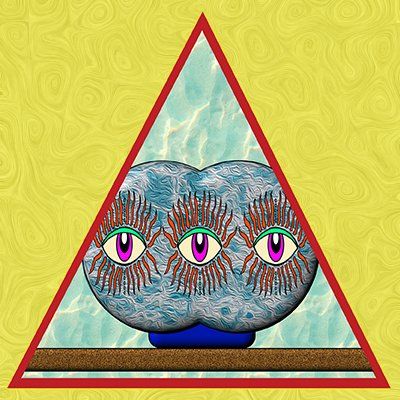
This icon was fashioned before the year three hundred of the Secondary Epoch and intended to symbolize the entire collection of double heads. While the nature of these images remained a mystery, they were clearly part of Tatchlan and, therefore, depicted as a Summoning icon. Below are two detailed and faithful renderings of these joined faces.
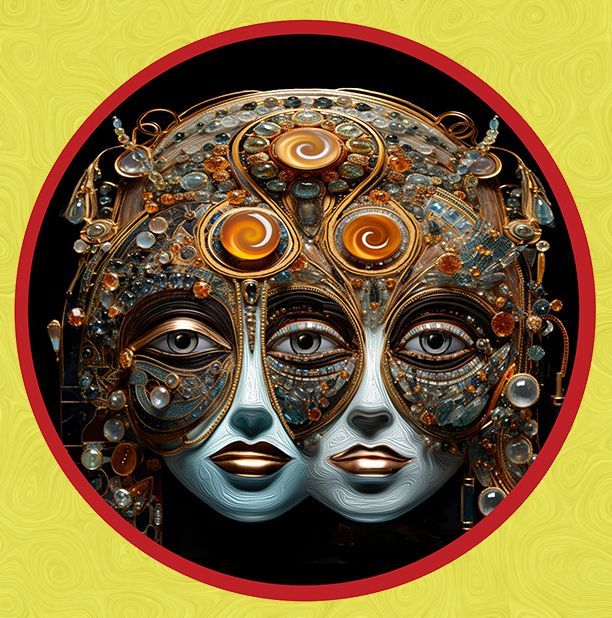
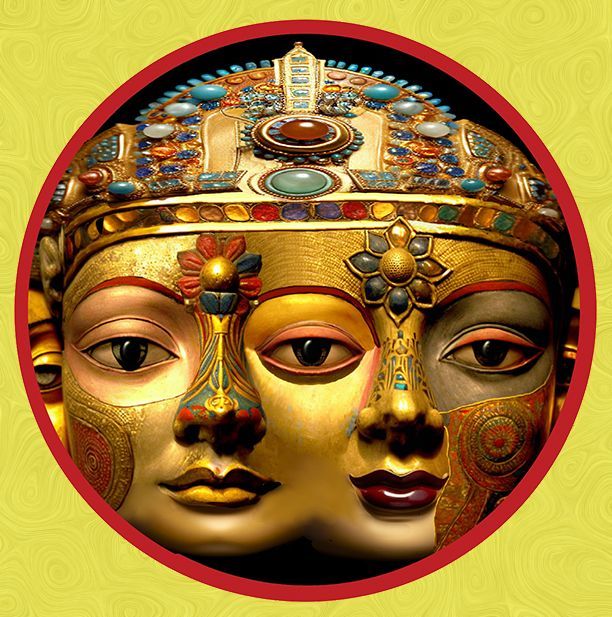
Invocates as Servants of Governance
It is primarily Invocates who serve as the ‘Indispensable Hands' of the Majastas and ministries within the Tatchlan System and on the Skin of Anu. Operants are a fraction of the Invocant population and are reserved for specialized tasks.
Without the stable Invocate population, the most potent Majastas could not possibly affect the living aspects necessary for maintaining an equilibrium between Tatchlan and the Skin of Anu. The ongoing surveillance of The Common Desire and clearing of Anomalies require many Invocate hands. Without them, the most accomplished ministry could not successfully carry out their Governance of the Cluster-of-Clusters Nation.
Danam Yeldic Invocates are also are in deep communication with Koru Invocates, ensuring the fulfillment of the Two Majastas Hands. The Invocate Bureau, the third of the Chancellory Ministry's four bureaus, maintains the Enclave System for their training, and the breeding and refinement of the ongoing generations of their Living Instruments. The Invocate and their several Living Instruments form the foundation of the functioning of the Tatchlan System and the Cluster-of-Clusters Nation.
The general formula is one in ten Danam Yelda becoming Maja and one in ten Maja becoming a Full Invocate. This is optimal for the Living System to function correctly (The Operant population in no way follows this general formula and is infinitesimal in most ages). Among the Danam Yelda, the Maja form a slightly larger percentage of the entire population. Still, the Invocates arising from them tend to remain at the average of one in ten. This means even a first-grade cluster, composed of eight circles of eight, may expect to produce one Invocate every two generations. A plaque reproducing the Full Invocate Badge is placed at the main entrance of the cluster. This emblem may also appear on other items associated with this cluster during the life service of their Invocate.
Suvuka issue
Long before the the Greater Era of the Primary Epoch emerged, hundreds of generations of the early Masters laboured on the Resplendent Work, unaware the other major self-aware species of Anu, the Suvuka. This innocence may be attributed to the ongoing chaos of the Four Generations of Self-Absorption gripping Rho-Jashun and Statos-Vey. The continuous breakdown of governing institutions, commercial trade, and exploration meant that these early Tolku needed to improve their full apprehension of Anu.
Finally, these early Masters discovered the Suvuka within Indatubangus; simultaneously, the earliest explorers mapped the coast of Thermistal. These creatures were far more massive than the Tolku, rivalling the largest Cousins, the Tamku and Toboku. They moved on all fours and had powerful talons on their paws. It is now thought their differing intelligence unknowingly shielded them from the Master's early work.
When finally discovered, the Suvuka presented an unprecedented challenge to the Masters. While possessing a lesser version of the ‘Collective Crown ’ to the Tolku, they proved extremely hostile to every encounter within Tatchlan and on the Skin of Anu. By the time of the Uluvatu and Primary Masters, long-range plans were laid to bring about their eventual domestication. These were disrupted by the First Suvuka Onslaught, when a vast invasion force entered Northern Rho-Jashun and began a campaign to exterminate the Tolku.
This destroyed the Muraharoma Dynasty's civilization on Rho-Jashun and devastated the primary institutions and leadership of the Menem Religion. It forced the remaining Tolku population behind what became known as the ‘Impenetrable Barrier Region,' the southern spur of the Mulungu Mountain chain on Rho-Jashun. The Masters had sounded the alarm ahead of the invasion, and those who listened moved south. Because of this advanced warning, they could successfully fortify every pass into the mountains. This ensured the Suvuka could not cross onto Statos-Vey, where all surviving Tolku took refuge.
Master Duamang
The Masters were now forced to use their knowledge to fashion a weapon by defanging and redirecting the most-ancient Brangnam Plague to use against the Suvuka. Despite the tragic circumstances, the Masters also saw this situation as an opportunity to better their situation. By making this action public, they successfully ended their long battles with what was left of the Menem Priesthood, whose own powers proved futile against the Suvuka. A leading Master of the time, Duamang, proclaimed the Tatchlan Masters would, by their workings within Tatchlan, stop up the Suvuka's wombs, so their numbers would drop within one to two Tolku generations.
This initiative was successful, leading to the gradual liberation of Rho-Jashun. The grateful Muraharoma Dynasty remnant on Statos-Vey renamed the age from the commencement of this extraordinary action the Duamang Age. At the end of this period, the final culmination of the Masters' work occurred.
The Living System ‘Quickened,' and many aspects of the long-awaited Cluster-of-Cluster Nation began to be born. This also led to an unforeseen disruption within Tatchlan as one of the Principal Faces, Hesha Vira, the Face of Raw Life, rebelled against Her situation. She used the Suvuka in a vain attempt to free herself from Tatchlan (this is detailed in the first novel, ‘Hesha Vira's Challenge’).
Domestication of Suvuka
This relatively short Duamang Age, completing what is now named the Lesser Era, was immediately followed by the largest in recorded history, the Greater Era of the Primary Epoch. Established by the first Majastas, Thakadush-Satwa, it heralded a vast period of Cluster-of-Cluster civilization. During this time, the original plan of Suvuka domestication was again taken up. Over generations, those working at the Vettencore Passage, separating the remaining raw Suvuka population on the south/eastern edge of Thermistal, were able to modify much of the Suvuka herds in many ways. This eventually led to the introduction of five hundred distinct breeds of animal companions and beasts of service throughout the Tolku Cluster-of-Clusters Nation. While most of these new Suvuka were born outside this original exclusion zone on Thermistal, some populations were allowed to continue running wild within this area. With the Killing Swath, these manifestations of Raw Life were unleashed. Due to the subsequent destruction of the Tolku civilization, many questions remain about this period.
The Common Desire
This phrase denotes what symbolically appears as a fluid or stable manifestation on the surface of the Living Orb. The Common Desire, also known as ‘The General Will,’ displays the collective tendencies of the general population. Usually, this takes the form of shifting bodies of fluid. These upwellings have their source in Indatubangus, the domain of Raw Life. Their passage is intended to refine their content before emerging on the surface of the Living Orb. Once on the surface, these springs form brooks and rivers and empty into lakes.
All Invocates may see these collective currents, displaying different colours and levels of viscosity, and examine what they contain. The Majastas surveys the entire liquid network, foreseeing potential issues. During distress or profound inspiration, this may take on a more concrete form, which is often enigmatic and requires examination and interpretation.
On occasion, The Common Desire represents an unusual and profound upwelling of Indatubangus and thus warns of increased Self-Absorption tendencies. The Majastas spends a portion of the Majastas Hours seeking out such incursions and sending them back down to the chaotic realm so as not to pollute Tatchlan.
The icon for The General Will is one of the most disturbing and enigmatic of all official emblazons. Dating back to the Primary Epoch, it shows a head lacking a nose, ears and eyes. In their place is an oversized mouth and tongue ready to consume all without discrimination. The skin on the head is fractured and inflamed, and the mouth's interior is diseased. While full, the tongue is covered in lacerations. This depicts the worst elements of The Common Desire encountered by all Invocates and Majastas on the rare occasions when it has become unchecked and contemplates initiating its Four Generations cycle. As with this symbolic head, when The General Will is left to itself, it has no perception, no observation, only the compulsion to consume all blindly. As such, it is another manifestation of Raw Life. This can be seen as cautionary, as throughout The Primary and Secondary Epochs, The Common Desire has remained an attractive animating force, kept in check and made bountiful by elegance and cultivation.
Yeldic Betweens lead Spinning Wheel Dances
During the Secondary Epoch, the Danam Yelda developed the new ability for Ripe Adults to enter the Resplendent System via ecstatic Spinning Wheel Dances. There are only a handful of unusual cases where such events have occurred among Koru clusters. While the event is directed by Betweens and occasionally Completes, the key to any Spinning Wheel Visions hinges on the cluster possessing Dreamers. The immediate goal of this activity is to harmonize and bring the entire cluster into balance. This need not be in response to a traumatic event; it is expected to be performed at least several times a year. There is no upper limit to how often it may be done, so the Elders determine their frequency.
Danam Yeldic Dreamers direct Spinning Wheel Visions
While the Dance begins the same each time, it may progress in various ways. When it becomes clear the delirious intensity is opening greater depths, Dreamers begin to enter most or all dancing cluster circles. This opens their inner senses to the wonders of Dreamer Visions. Cluster Dreamers do this ecstatically and are reported to feel a ‘slip' as their Dreams move into a new realm inhabited by other cluster mates. It is related that this intense episode differs significantly from what Dreamers usually experience. It is a unique hybrid of this Spoke of the Cluster Wheel, enriching the entire cluster.
With the advent of the Danam Yelda's Spinning Wheel and other power dances, their Dreamers have taken on an additional role. With the increased Aromas before a dance, Yeldic Circle Dreamers often become Cluster Dreamers. They can assist in the spinning circle or cluster in their descent while the cluster allows them to ‘turn' within the Living System when they arrive.
Their animation imparts a previously unknown measure of Dreamer mobility. All Danam Yeldic Clusters may perform Spinning Wheel Dances. If they do not possess any Dreamers, they will not have Spinning Wheel Visions. Dreamers comprise twelve to eighteen percent of the population, so this situation is rare.
Spokes of the Cluster Wheel and even
Mundanes may partake in this sudden entry. Perception is unique to these Danam Yeldic gatherings, tending to be broad in perspective while primarily focused on the Yeldic portions of the Living System.
Danam Yeldic Experiences of this nature are generalized and cannot be used to delve for specific information. This is seen as one of the unique abilities of the Danam Yelda. In only a handful of cases, any
Koru
cluster, or any branch of
Koru Yelda
cluster, duplicated this experience, and then only in extraordinary circumstances.
